Page 2 of 2
Re: Austrian (Tyrolean) Alps, July 2013
Posted: Sun Jul 28, 2013 9:45 pm
by David M
Next up was blindingly easy ID-wise:
Black Veined White -
aporia crataegi
Only saw 10 or so of these, and all were between 1200m and 1600m:
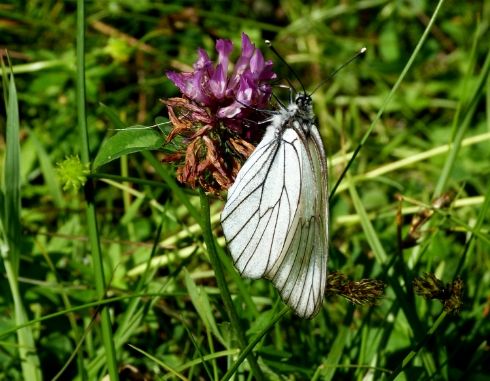
From blindingly easy to almost impossible. This
pyrgus attracted my eye due to the minimal white dots on the forewings. The nearest match in my Tolman and Lewington is female Dusky Grizzled Skipper -
pyrgus cacaliae
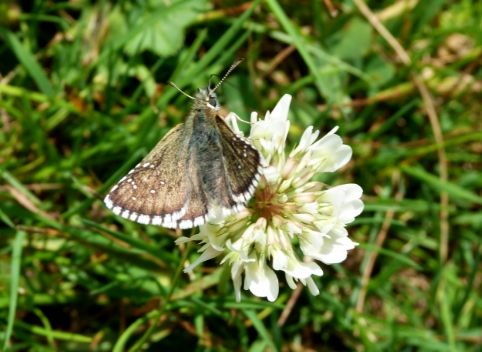
I'm throwing this one in because most
pyrgus undersides read like Mandarin Chinese to me, i.e. incomprehensible. Probably another Olive Skipper but he who dares...
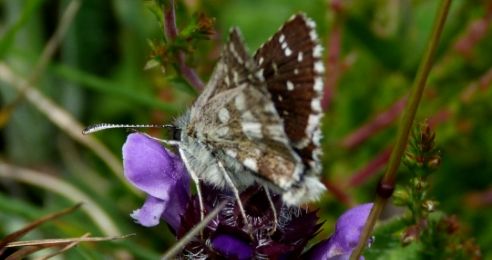
Re: Austrian (Tyrolean) Alps, July 2013
Posted: Sun Jul 28, 2013 10:58 pm
by Roger Gibbons
I doubt that your first
Pyrgus is
cacaliae, as it just doesn’t look right for that species. The small spots are discrete but usually slightly (but only slightly) larger in
cacaliae. The sandy dusting is not something I have ever seen on
cacaliae.
Given that it appears to be a female, although not entirely clear from the photo,
serratulae looks to be the favourite, with
carlinae a possible outsider.
The underside looks most likely
serratulae as you surmise, although
serratulae usually has a clear marginal solid arc-shaped mark in s2, although maybe this is not visible in this photo and the butterfly looks worn.
Carlinae again a possible outsider, although a glimpse of the upperside forewing cell spot would/should be conclusive. If you have shot showing more of the upperside…
I tried to undertake some sort of analysis of
Pyrgus underside markings last year:
http://www.butterfliesoffrance.com/Pyrg ... rsides.htm
Interesting that you found
crataegi within this altitude band. I have found the same, as observed on my
crataegi page.
Re: Austrian (Tyrolean) Alps, July 2013
Posted: Mon Jul 29, 2013 4:36 pm
by David M
Roger Gibbons wrote:I doubt that your first Pyrgus is cacaliae, as it just doesn’t look right for that species. The small spots are discrete but usually slightly (but only slightly) larger in cacaliae. The sandy dusting is not something I have ever seen on cacaliae.
Given that it appears to be a female, although not entirely clear from the photo, serratulae looks to be the favourite, with carlinae a possible outsider.
Thanks, Roger. Yes, I see now you've pointed me in the right direction that
cacaliae is (understandably) rather duskier!
The underside looks most likely serratulae as you surmise, although serratulae usually has a clear marginal solid arc-shaped mark in s2, although maybe this is not visible in this photo and the butterfly looks worn. Carlinae again a possible outsider, although a glimpse of the upperside forewing cell spot would/should be conclusive. If you have shot showing more of the upperside…
Sorry. That's the only shot I got before it zoomed off (and given that it was a near-precipitous slope I didn't choose to follow). Thanks for the link to the pyrgus undersides site though. I'll definitely use that when (if) I get some decent quality wings closed shots.
Interesting that you found crataegi within this altitude band. I have found the same, as observed on my crataegi page.
It's strange for me because last year in the Pyrenees they could be found at really low levels and up to 1600m. The year before in the Massif Central they were almost exclusively in people's gardens.
I saw my first just before I got down to the mittelstation which is at 1400m and certainly by the time I was down to the lower station at 700m they'd long since petered out.
I'm not altogether certain this species knows what its preferred habitat fancies are. Like Brimstones, they just seem to pop up where they want to.
Re: Austrian (Tyrolean) Alps, July 2013
Posted: Mon Jul 29, 2013 6:23 pm
by David M
When away, I always like to spend a day at lower levels. Not only does this give me an opportunity to check out the non-high altitude loving species flying, but it also offers my feet a break from walking down steep hills!
I took a bus to nearby Reith and walked part way round the
wasserweg before peeling off up an attractive looking wooded path into the lower hills.
Several new species were encountered:
Pearly Heath -
coenonympha arcania
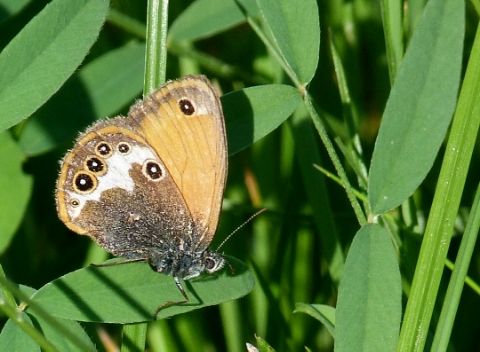
Having seen this species in near plague proportions in France, it was a bit of a surprise to go chasing after them to get a shot as they were thin on the ground here.
This specimen was nice and fresh looking:
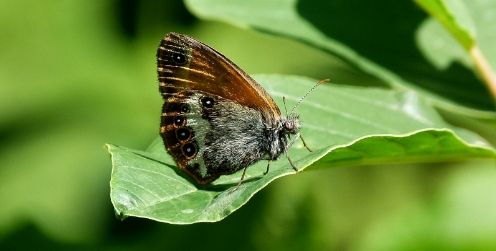
There was a clearing about 100m into the woodland with a damp field. I went down to the base and there were butterflies galore, including this fritillary which has left me stumped:
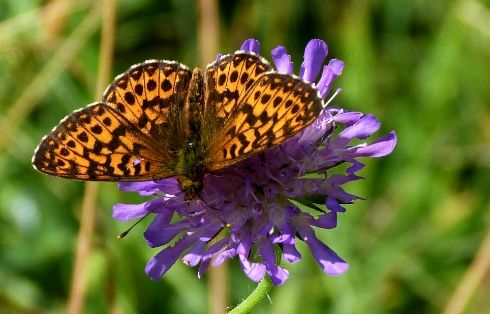
I thought at first it was a SPBF, but a glance at the undersides told me a different story:
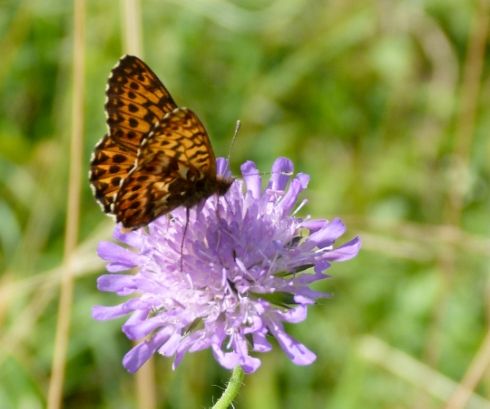
Bearing in mind the distribution maps and altitude preferences, I can only whittle this species down to one of two, and neither of those fill me with any certainty. It's definitely not
clossiana dia, I've seen those before and the uppersides and undersides of this specimen are both wrong for that species.
I noticed that
boloria aquilonaris is prone to fly at lower altitudes, although its stated habitat preferences in Tolman & Lewington are raised bogs and wet heaths, whereas this was simply a damp field surrounded by light woodland.
The only other candidate would be
titania, but this specimen seems too heavily marked on the uppersides for this. Help please!!
Re: Austrian (Tyrolean) Alps, July 2013
Posted: Mon Jul 29, 2013 7:05 pm
by Padfield
Hi David. Your fritillary is definitely Titania's. You probably noticed it was quite big (whereas cranberry is quite small) and the heavy markings are very typical. Here's one I photographed earlier this year:

I'm so glad you had a successful holiday, after the inauspicious start. You have seen some classic alpine species and were blessed with the weather!
Guy
Re: Austrian (Tyrolean) Alps, July 2013
Posted: Mon Jul 29, 2013 7:23 pm
by David M
padfield wrote:Hi David. Your fritillary is definitely Titania's.
Thanks ever so much for that one, Guy. It really was giving me headaches!
Yes, the frit was at least PBF sized but my Tolman & Lewington depicts a far less heavily marked individual for
titania. As you say, I recognise Cranberry is smaller and I was certainly not happy about the habitat I found it in for it to have been a likely
aquilonaris.
Until one has seen these butterflies in the flesh, however, one cannot know the 'jizz'. My previous experience of
dia made me discount it straight away, though had I never encountered this species prior to this trip, I'd probably have been seriously deliberating over it.
Re: Austrian (Tyrolean) Alps, July 2013
Posted: Mon Jul 29, 2013 7:42 pm
by David M
Further along this path was another break in the woodland. There were huge numbers of various species nectaring on the thistles and umbellifers, but I spotted something that looked a bit different and it was a new species for me (albeit a rather bedraggled specimen):
Woodland Brown -
lopinga achine
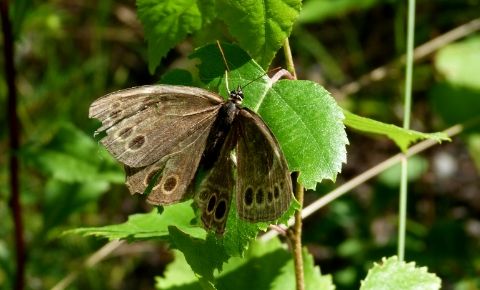
I did see another one in better condition but it spooked before I could home in. Here's a part-underside of the upper individual:
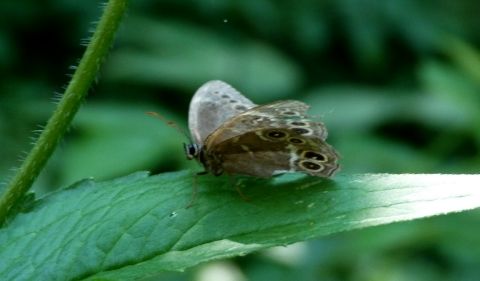
On my way back to Reith, I spotted what I thought was a Comma behaving rather strangely on the ground. As I got closer I discovered it wasn't a Comma at all:
Large Tortoiseshell -
nymphalis polychloros
Poor image, I know, but I'm afraid this species is hypersensitive to movement and was off before I could get within 10 feet:
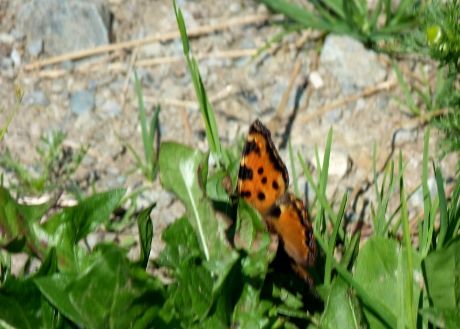
Re: Austrian (Tyrolean) Alps, July 2013
Posted: Tue Jul 30, 2013 6:55 pm
by David M
On my final full day I decided to visit the mountain lake called the Zireiner See which lies at 1799m on Sonnwendjoch just north of Kramsach.
Forgetting about the butterflies for a moment, this was a lovely panorama in its own right:
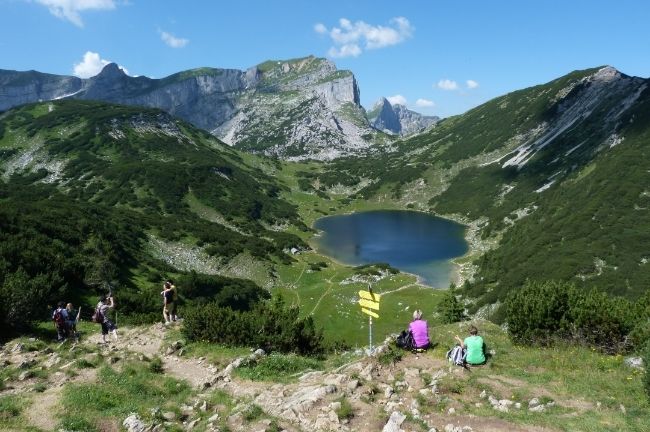
I didn't actually go down to the 'see'side because the habitat looked poor for lepidoptera. Instead, I concentrated on the higher slopes at about 1950m. There were plenty of species at this altitude including the following fritillary:
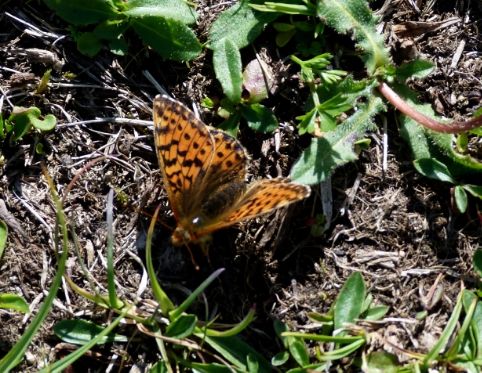
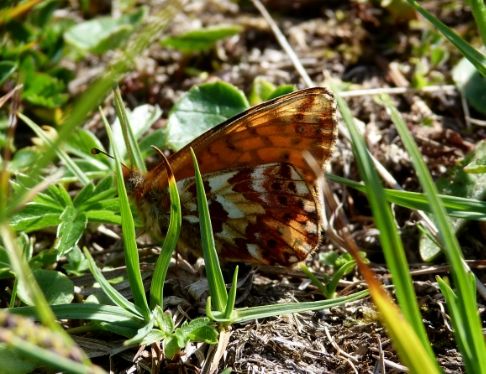
Slightly smaller than a SPBF, this species was fairly common, but they were difficult to approach, meaning that photos were at a premium. I stand to be corrected, but I think this is Shepherd's Fritillary
boloria pales.
This is where I saw the large numbers of
melampus. The terrain was very different from the upper slopes of the marshy Wiedersbergerhorn. This site was very rocky, full of outcrops of what seemed to be shale, and much drier looking.
I managed to get an underside of another fritillary, and being inexperienced in montane species, I have to say I think there's sufficient difference in this butterfly's appearance to suspect it might NOT be yet another example of
pales...what IS it though (surely the only other candidate is
aquilonaris?)
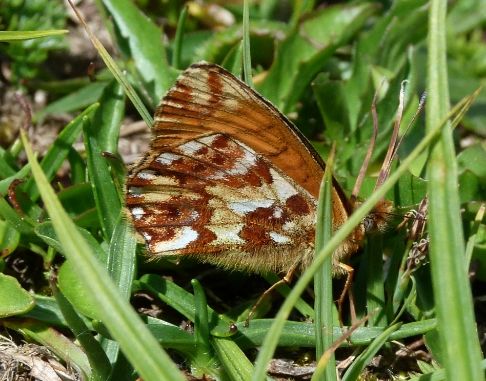
Lycaenids had been conspicuous by their absence all week, so when this one settled readily I zoomed in:
Mountain Argus -
aricia artaxerxes allous?
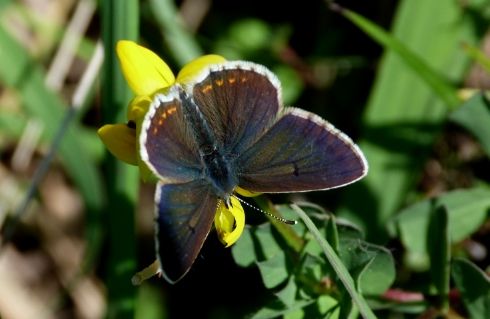
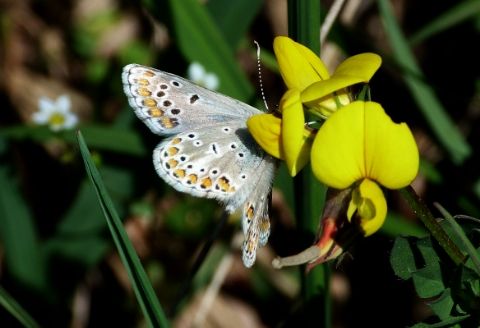
A familiar
erebia from the Pyrenees then made an appearance. Strange how this species was absent from Wiedersbergerhorn yet commonplace on Sonnwendjoch, just 15km away:
Bright Eyed Ringlet -
erebia oeme
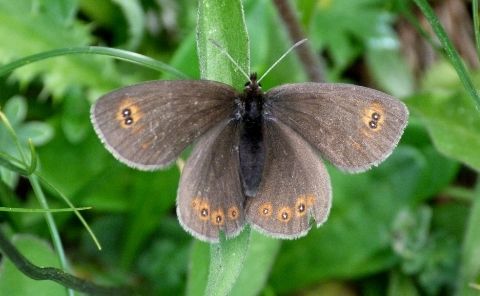

I have a question about this butterfly too. There were plenty flying about and they seemed to have much darker markings than the Moorland Clouded Yellows I saw on Wiedersbergerhorn. However, when I consult my guide, the message I'm getting is that this individual is more 'Moor' than Mountain:
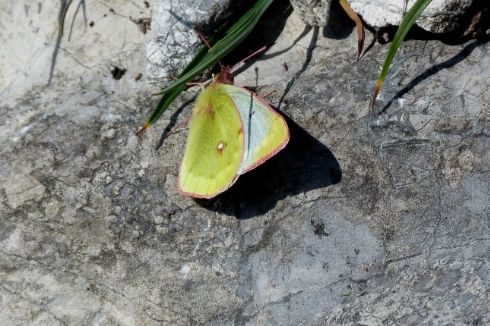
If it IS
palaeno rather than
phicomone then I've not worked assiduously enough, as I've seen the latter before and they're quite different in flight - the dark upperside veins are very noticeable and they were definitely present up here. Sadly, I may have taken my record shot of the wrong species.

Re: Austrian (Tyrolean) Alps, July 2013
Posted: Tue Jul 30, 2013 7:08 pm
by Roger Gibbons
Your Colias is phicomone.
Palaeno is rather clean-looking and the neat black borders are often very apparent in flight, compared to the rather suffuse markings of phicomone.
Re: Austrian (Tyrolean) Alps, July 2013
Posted: Tue Jul 30, 2013 7:17 pm
by David M
Roger Gibbons wrote:Your Colias is phicomone.
Palaeno is rather clean-looking and the neat black borders are often very apparent in flight, compared to the rather suffuse markings of phicomone.
That's reassuring, Roger, since the Clouded Yellows I saw on this mountain were very heavily veined and unmistakeably different from Moorland CY in flight. Given that there were sizeable numbers of them and that they always settle wings closed, I thought perhaps that I'd inadvertantly chosen a rogue
palaeno to take an image of.
Re: Austrian (Tyrolean) Alps, July 2013
Posted: Tue Jul 30, 2013 8:18 pm
by Padfield
Hi David. Your first
Boloria is
pales, as you surmise. Assuming the upperside and underside are of the same individual, the underside precludes
aquilonaris and the upperside precludes
napaea.
In my opinion, the second one is also
pales. Here, too, you can leave
aquilonaris out of the picture because of the vestigial markings on the underside of the forewing (and other details, like the pale orange wedge on the hindwing). For comparison, here is aquilonaris:

You can see that the markings in the cell in particular on the forewing are branded dark and clear. There is no buff submarginal/postdiscal wedge on the hidwing.
The confusion species, if you only see an underside, is
napaea. In general, the underside of
napaea is more diffuse and rather duller and the yellow markings near the apex of the forewing are often larger and may even coalesce into a single yellow blob (in the female). The species is variable, though, and it can be close to
pales. I think your butterfly is within the range of variation for
pales and should be recorded as this in the absence of anything more definitive.
Well done with the large tortoiseshell! The summer window for this species is quite narrow. I have seen exactly one summer LT so far - whereas in March and April I couldn't leave the house without tripping over them.
Guy
Re: Austrian (Tyrolean) Alps, July 2013
Posted: Wed Jul 31, 2013 9:07 pm
by David M
Thanks again for the pointers, Guy. You really are responsible for a sizeable chunk of what's in my subliminal memory bank when I'm away.
Anyway, a few more images to go:
I approached this lycaenid simply because it seemed fairly docile and it was only after taking the photos that I realised I was seeing something new:
Geranium Argus -
eumedonia eumedon

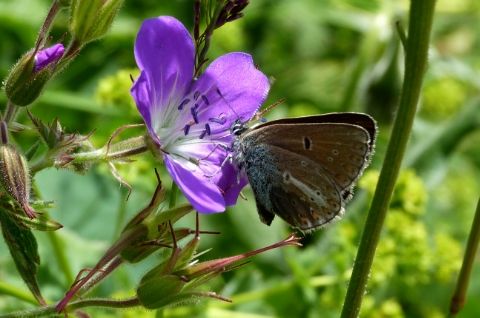
Blue 'Blues' had been thin on the ground all week, so I followed this one assiduously:
Turquoise Blue -
plebicula dorylas
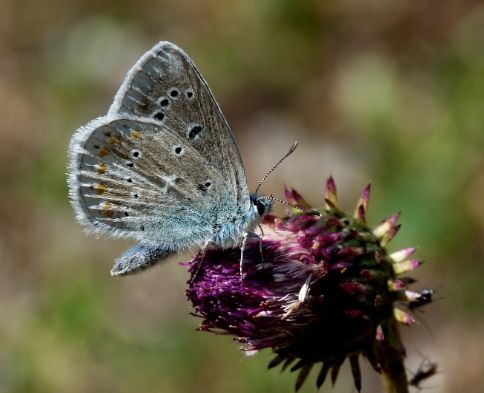
Another
pyrgus flashed by, but when it settled my sixth sense told me to take a few photos because it didn't look like the others I'd seen. I'd welcome any suggestions. I think it can only be one of three species but I'm not going to build my hopes up:
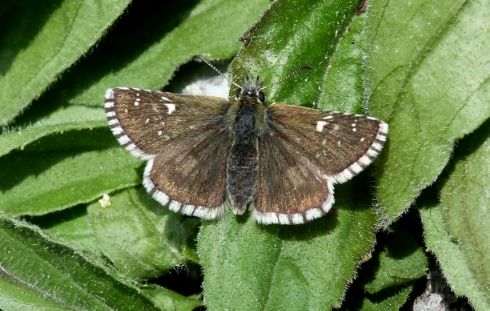
I got a shot of another
pyrgus, but I think this is probably another
serratulae:
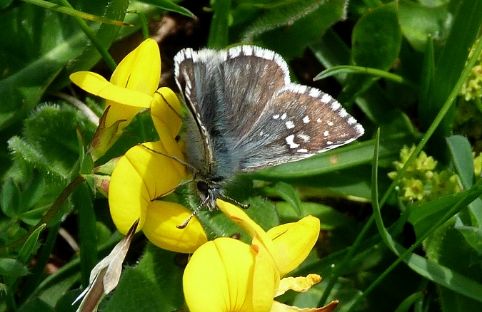
A very pale coloured Blue then flew past me. I thought it might be an unusually pallid Chalkhill so I got a photo (sadly, the insect wasn't opening his wings whilst at rest):
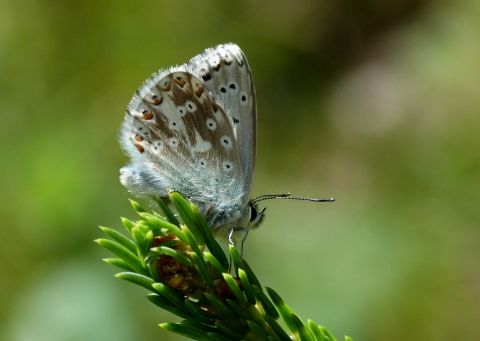
Re: Austrian (Tyrolean) Alps, July 2013
Posted: Wed Jul 31, 2013 9:58 pm
by Padfield
Hi David. It seems this will have been a memorable holiday!
It's too late at night for me to apply all cylinders to your Pyrgus, but I think you can see why I carry a net with me! If I don't always get a beautiful photo at least I see both the upperside and underside of difficult individuals so can usually record the species with confidence. I have to say, even then there are some that just refuse to sit in a pigeon hole...
Guy
Re: Austrian (Tyrolean) Alps, July 2013
Posted: Thu Aug 01, 2013 9:11 pm
by David M
UK species in Austria
Needless to say, there were plenty of our own species present in the part of the Tyrol that I visited. I've put together some observations:
Large Blue
Believe it or not, this was the most commonly seen UK Blue. In fact, after Mazarine it was the commonest INCLUDING the non-uk Blues. As ever, there were no significant concentrations; at best, two or three might be seen in a 20m square area, but over the 5 days I was there I reckon approaching 100 were seen and all at over 1500m.
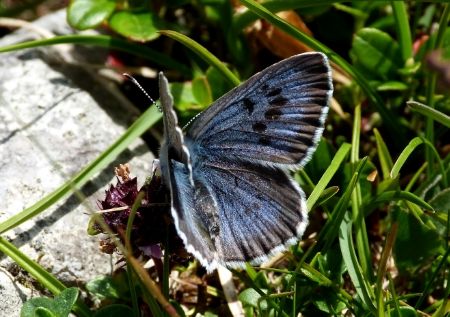 Marsh Fritillary
Marsh Fritillary
'Fraid I couldn't get my British 'calendar' out of my head, meaning that I kept chasing these frits thinking they MUST be some other species. Of course, the colour pattern is different to OUR Marshies, and the Austrian ones were smaller, but there were fair numbers of them flying up on the Wiedersbergerhorn at 1800m even at the end of July!!
 Brimstone
Brimstone
Aaah...Brimstones! I love 'em and THEY love Austria it seems. Hundreds of them about; they crop up at 1900m just as readily as at 900m. I saw multi-dozens the day I walked through the
wasserweg and its nearby woods. Males and females were just digging into the thistles as best they could with absolutely no thoughts of mating.
I think this is the first time I've ever seen a male and a female sharing a flowerhead:
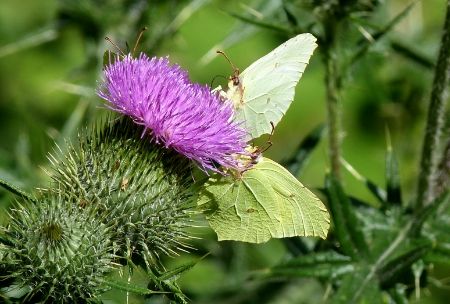 Swallowtail
Swallowtail
Only about 8 seen, and all on the descent from Sonnwendjoch on my last day.
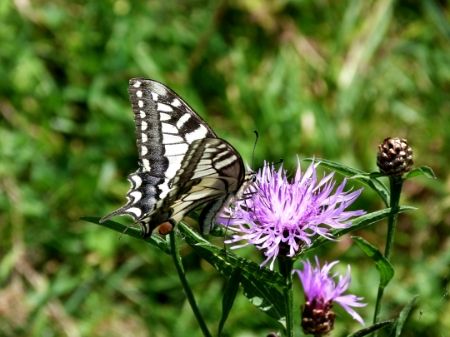 White Letter Hairstreak
White Letter Hairstreak
Lycaenids were poorly represented overall really, and I only saw TWO Hairstreaks all week...and both were White Letters. This one really surprised me as I found it in a pinewood clearing a good 500m from the nearest deciduous tree:
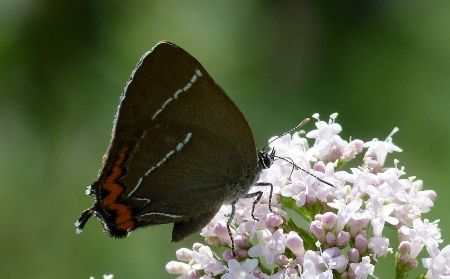
Full lists on UK and non-UK species to follow, but if anyone is in any doubt about taking a European holiday to study butterflies, then remember that you get plenty of other things for your money as well.
Where in the UK would you see this panorama? It's taken from about 1800m on Sonnwendjoch and is looking towards Brixlegg and Reith (Alpbach and the Wiedersbergerhorn where I stayed are in the first valley branching off to the left, directly below the highest of the clouds in the image):
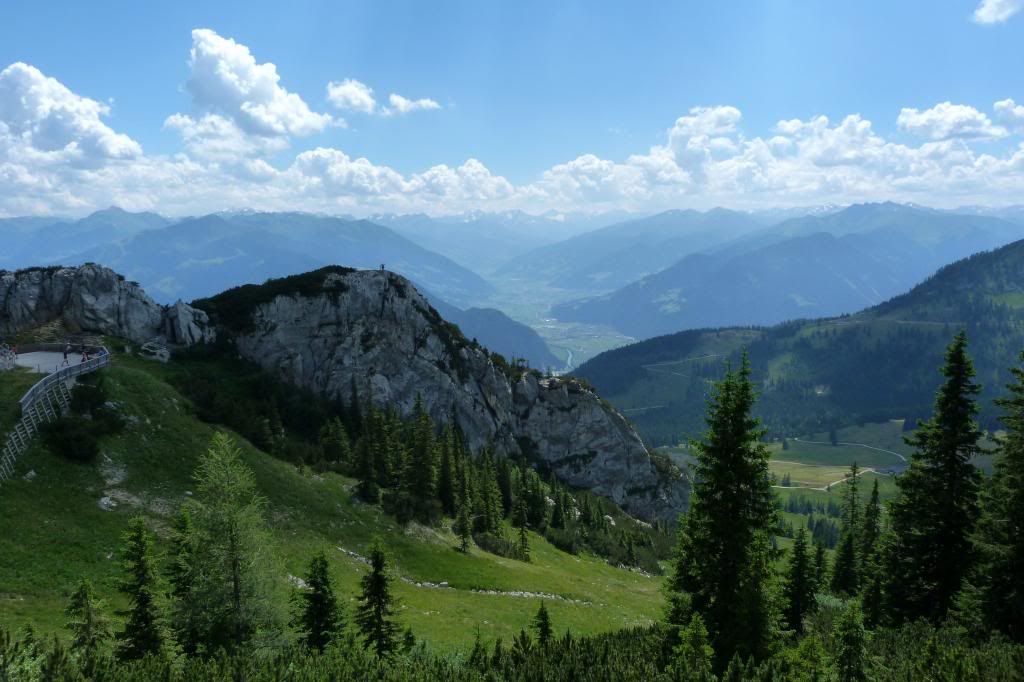
Re: Austrian (Tyrolean) Alps, July 2013
Posted: Mon Aug 12, 2013 8:15 pm
by David M
Summary
Non-UK species seen 20th-23rd July
1. Blind Ringlet
2. False Heath Fritillary
3. Alpine Heath
4. Mazarine Blue
5. Large Grizzled Skipper
6. Moorland Clouded Yellow
7. Sooty Copper
8. Arran Brown
9. Large Ringlet
10. Lesser Mountain Ringlet
11. Large Wall Brown
12. Olive Skipper
13. Black Veined White
14. Pearly Heath
15. Titania's Fritillary
16. Woodland Brown
17. Large Tortoiseshell
18. Shepherd's Fritillary
19. Mountain Argus
20. Bright-Eyed Ringlet
21. Mountain Clouded Yellow
22. Geranium Argus
23. Turquoise Blue
24. Map Butterfly - Two of these seen but not photographed (both summer brood).
Re: Austrian (Tyrolean) Alps, July 2013
Posted: Mon Aug 12, 2013 8:33 pm
by David M
UK species seen - in order of abundance
Extremely common
1. Small White - Absolutely everywhere. A little paler than ours but with just as great a propensity to appear at altitude as at lower levels. Many hundreds seen.
2. Brimstone - Silly numbers concentrated in medium altitude woodland clearings. Handfuls seen everywhere else, from valley level up to 2000m
Commonplace
3. Large Skipper - Lower levels only, but high numbers in the right habitat
4. Meadow Brown - Almost as ubiquitous as in the UK below 1200m
5. Ringlet - Same as above
6. Small Tortoiseshell - Common above 1500m especially
7. High Brown Fritillary - Decent numbers in woodland clearings at low to medium elevation
8. Silver Washed Fritillary - A few would show up practically anywhere in or around woodland between 900 and 1300m
9. Mountain Ringlet - Numerous only above 1600m on Sonnwendjoch
10. Large Blue - Surprisingly common above 1500m
11. Small Heath - Not about in crazy numbers, but the odd one would pop up regularly at altitude
Noticeable, if not numerous (between 10 and 50 seen)
12. Small Skipper - Lower levels only, but less common than in the UK
13. Large White - about 30 seen in total
14. Marsh Fritillary - around two dozen or so seen on Wiedersbergerhorn
15. Heath Fritillary - again, a couple of dozen at least on Wiedersbergerhorn, but none at low altitude
16. Small Copper - 20 at most. Almost all seen as singletons.
17. Common Blue - Surprisingly few of these. About 20 in total.
18. Holly Blue - I saw double figures on the day I kept to low levels around the wasserweg
Single figures
19. Peacock - Not common here. Half a dozen at most.
20. Comma - Again, no real presence. Three or four spotted in woodland.
21. Wood White - I'm not convinced these were actually sinapis. The two I saw were both in woodland but were spotted above 1400m
22. Swallowtail - About 8 seen
23. Green Veined White - Only TWO positively identified!
24. White Letter Hairstreak - Again, only 2 seen
25. Brown Argus - Saw about half a dozen definites, but maybe more as I simply didn't chase what I thought may be female Common Blues
26. Chalkhill Blue - Not absolutely certain of the ID, but if it WAS coridon then it was the only one I observed
27. White Admiral - Four seen in woodland clearings
28. Painted Lady - Two seen, both high up on Wiedersbergerhorn
29. Small Pearl Bordered Fritillary - Definitely at least one seen, as I thought it was something else and consequently photographed it
30. Pearl Bordered Fritillary - Ditto the above
31. Dark Green Fritillary - Two definites seen (one of which was photographed)
32. Speckled Wood - Incredibly, just one seen, and a ragged individual at that.



































